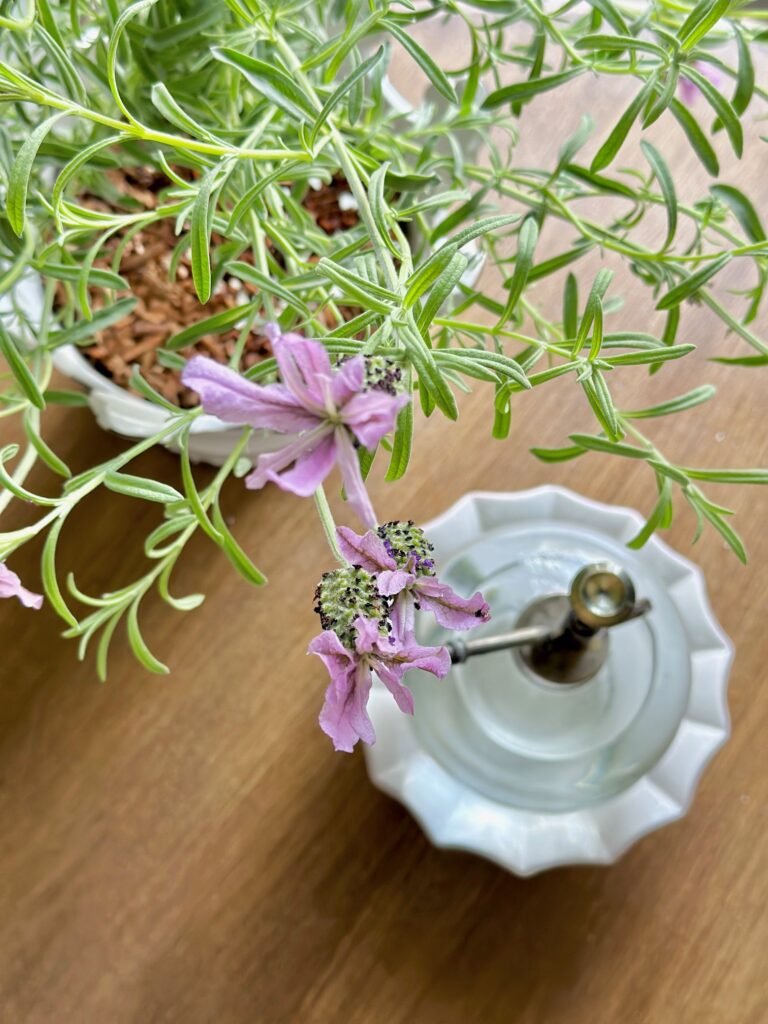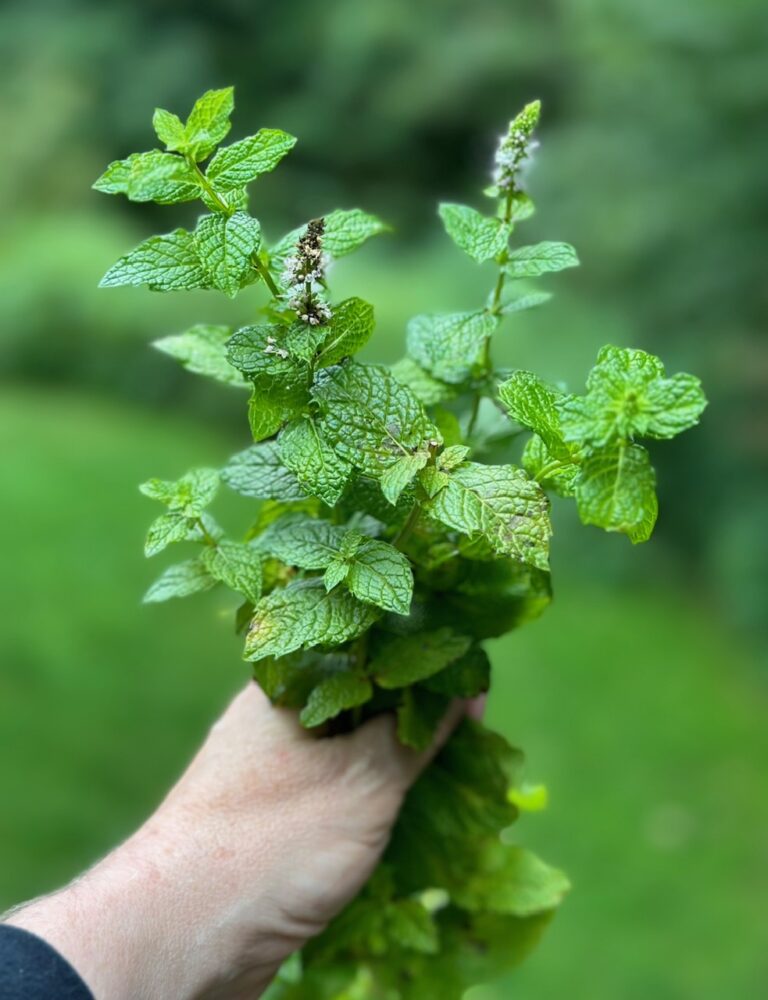How Often to Water Lavender Indoors: A Comprehensive Guide
Are you thinking about growing lavender indoors? Lavender is an excellent choice for an indoor plant. It’s a drought-tolerant plant that doesn’t need much water, making it perfect for those who don’t have a green thumb. However, it’s important to know how to care for your indoor lavender plant to ensure it stays healthy and fragrant. No worries! In this post, How Often to Water Lavender Indoors: A Comprehensive Guide you will learn how to grow lavender indoors with my expert tips on watering, soil, lighting, temperature, and troubleshooting common problems.
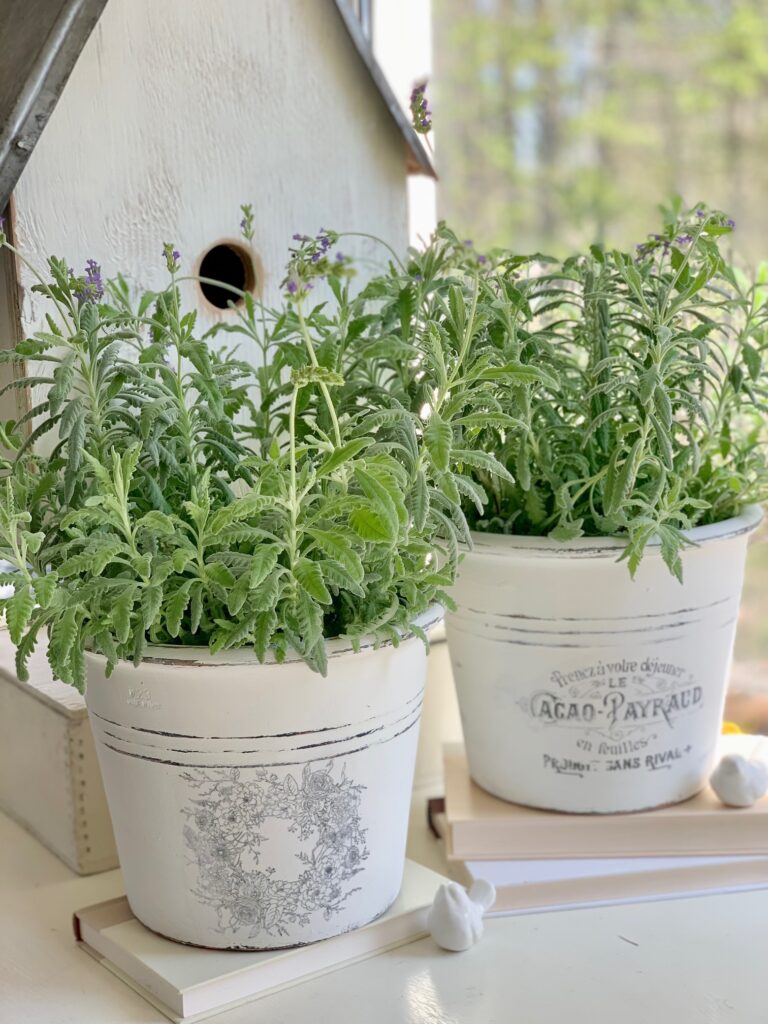
Content may contain affiliate links. When you shop the links, we receive a small commission at no cost to you. Thanks for supporting my small business.
The Meaning and Many Benefits of Lavender
Lavender is not just any ordinary plant. It’s soothing fragrance and beautiful blooms make it a favorite of gardeners and aromatherapy enthusiasts alike. Lavender has been used for centuries in traditional medicine, as well as in perfumes, soaps, and other beauty products. The plant is also known for its calming properties, making it a popular choice for relaxation and stress relief. In the language of flowers, lavender symbolizes purity, silence, and calmness. Overall, the lavender plant is a symbol of serenity and simplicity, which is why it is loved and cherished by many.
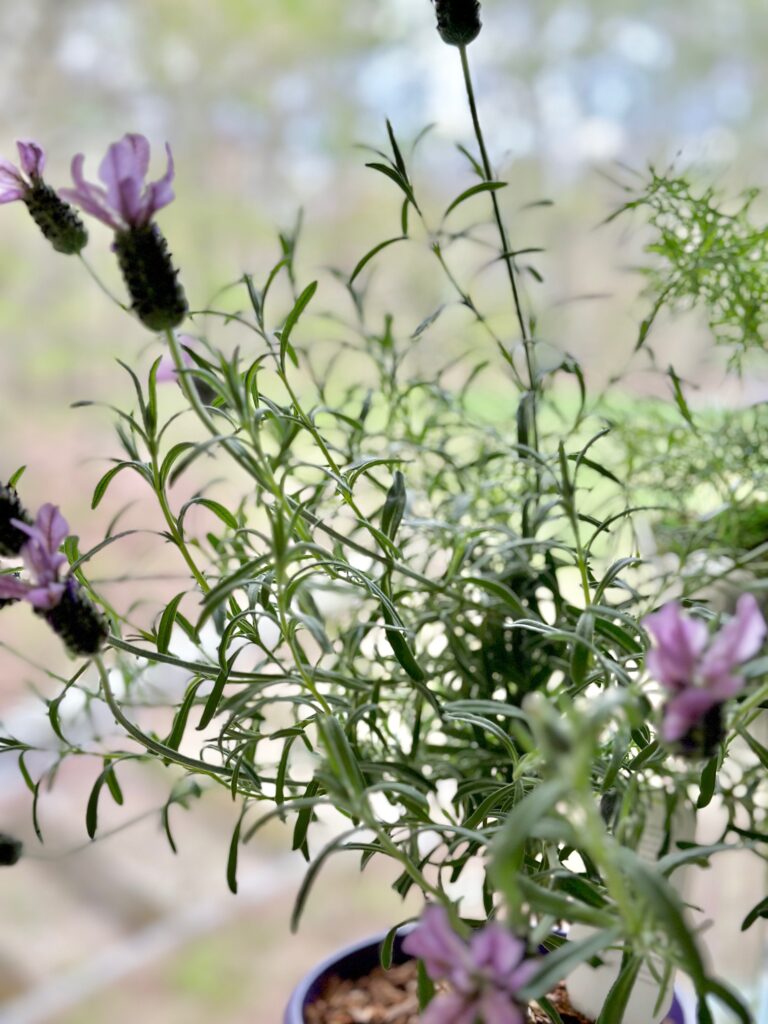
The Best Varieties of Lavender for Growing Indoors
Lavender species, such as French lavender, English lavender (Lavandula angustifolia), Spanish lavender, and Canary Island lavender (Lavandula dentata), are all excellent choices for indoor growing. Lavender seeds are also readily available and easy to grow. The essential oils extracted from lavender are highly valued for their therapeutic properties, making it a popular choice for indoor plants. Check out this Wikipedia post for more information on varieties of Lavender (Lavandula).
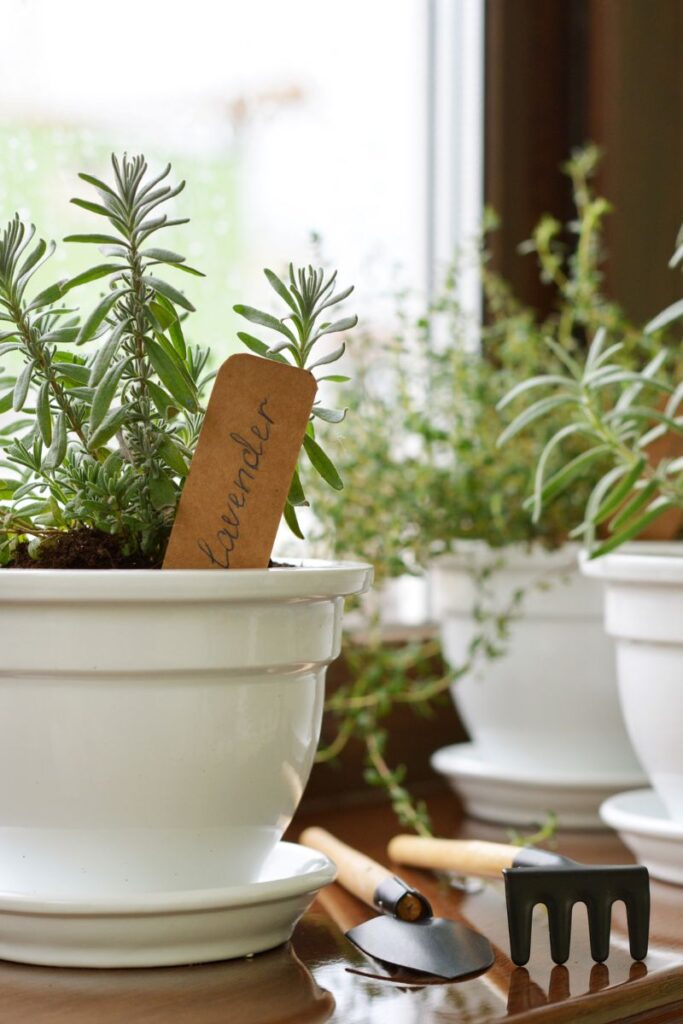
How Often to Water Lavender Indoors: A Comprehensive Guide (Plus Other Essential Care Tips)
Choosing the Right Soil for Your Indoor Lavender Plant
When it comes to choosing the right soil for your indoor lavender plant, it’s important to consider the pH level. Lavender prefers well-draining soil that is slightly alkaline, with a pH level between 6.5 and 8.0. This means that it can tolerate soil that is slightly more alkaline than acidic.
However, it’s important to note that while lavender can tolerate slightly alkaline soil, it doesn’t necessarily thrive in it. If the soil is too alkaline, it can lead to nutrient deficiencies and other problems. So while it’s okay to use soil that is slightly alkaline, it’s still important to monitor the pH level and adjust as necessary to ensure that your lavender plant is getting the nutrients it needs to grow and thrive.
If you’re not sure about the pH level of your soil, you can purchase a pH testing kit at your local garden center or online. If the soil is too alkaline, you can add acidic materials like peat moss or sulfur to lower the pH level. Alternatively, you can also purchase pre-mixed soil that is specifically designed for growing lavender.
Overall, choosing the right soil for your indoor lavender plant is essential for its proper growth and care. Ensuring that the soil is well-draining and slightly alkaline can help promote healthy root growth and prevent common problems like root rot.
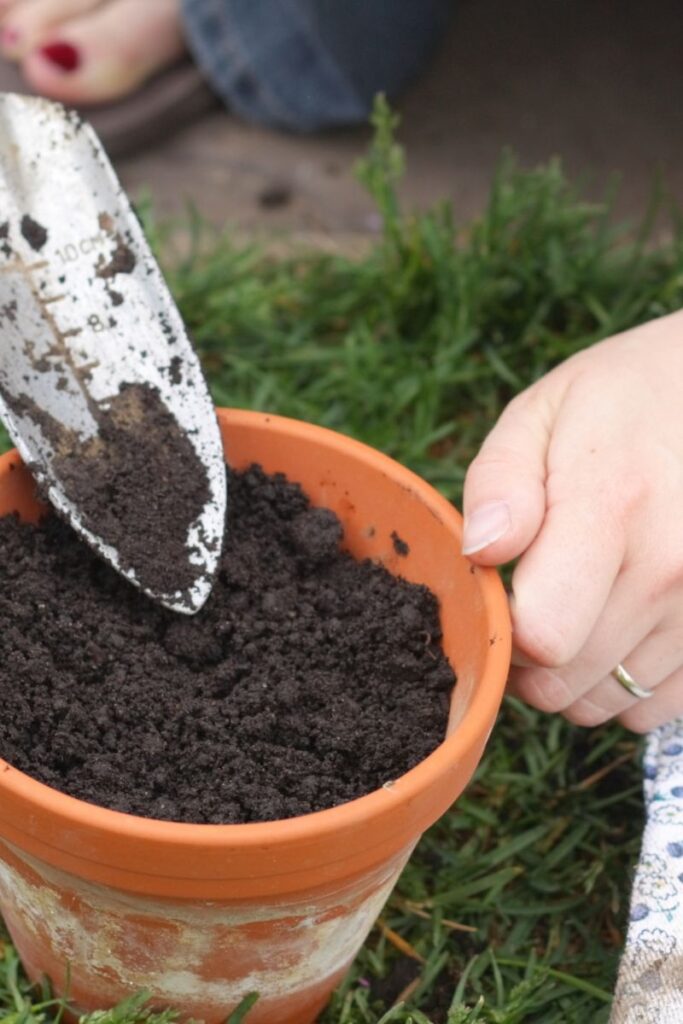
There are several ways to add alkaline to your indoor lavender plant soil, using items that are commonly found at home. Here are a few methods you can try:
- Eggshells: Crushed eggshells can be added to the soil to increase alkalinity. Simply rinse the shells, let them dry, and crush them into small pieces. Then, mix the eggshells into the soil around the base of your lavender plant.
- Baking soda: Another way to increase soil alkalinity is by using baking soda. Mix a tablespoon of baking soda into a gallon of water, and use this solution to water your lavender plant. Be careful not to use too much baking soda, as it can damage the plant.
- Wood ash: If you have a fireplace or wood stove, the ash from the burned wood can be used to increase soil alkalinity. Simply sprinkle a small amount of wood ash on top of the soil around the base of your lavender plant. Be sure to use ash from untreated wood only.
- Crushed limestone: Crushed limestone can also be used to increase soil alkalinity. Mix a small amount of crushed limestone into the soil around the base of your lavender plant, being careful not to overdo it.
Remember, it is important to monitor the pH levels of your soil and adjust as necessary to ensure the health and growth of your indoor lavender plant.
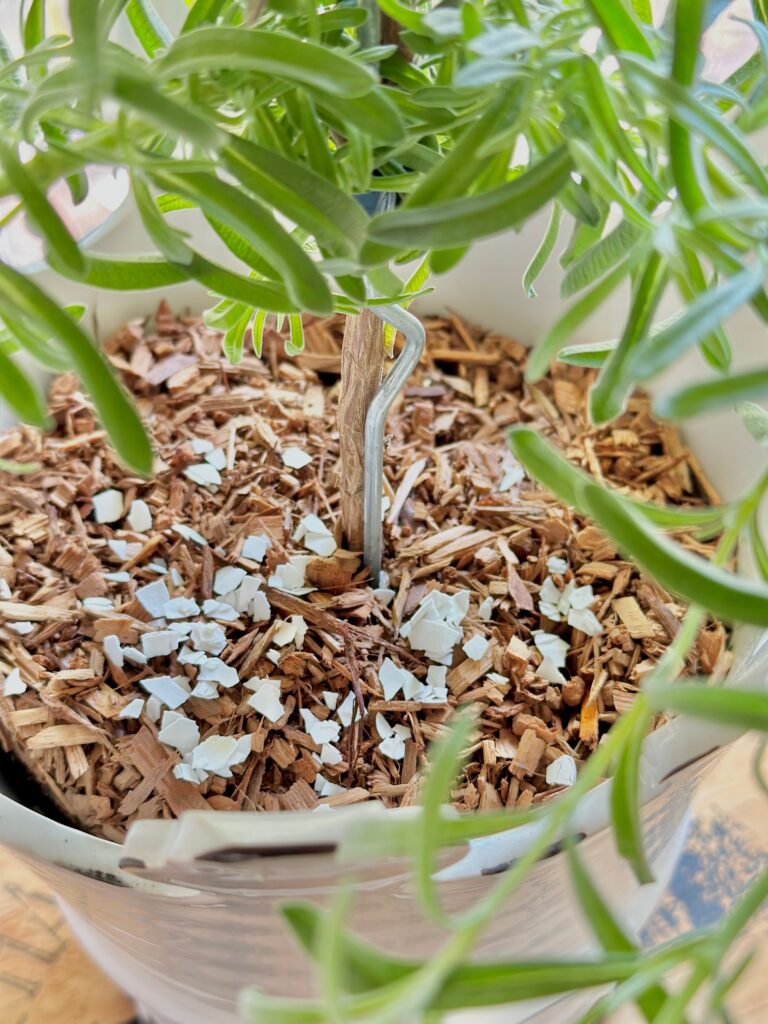
The Best Type of Pot for Indoor Lavender Plants
The best pot for indoor lavender is one that has good drainage, is at least 12 inches deep, and is wide enough to accommodate the plant’s root ball. Lavender plants prefer to have their roots in well-draining soil, so it’s important to choose a pot that has drainage holes in the bottom. Additionally, choosing a pot with a neutral color will help to prevent overheating during hot summer months. Terracotta pots are a popular choice for lavender as they are porous and allow for better air circulation, which can help to prevent root rot. Ultimately, the most important factor is to choose a pot that will provide enough space for the plant to grow and has good drainage.

Proper Watering for Your Indoor Lavender Plants
Lavender doesn’t need much water, and overwatering can lead to root rot, which can be fatal to your plant. As a rule of thumb, water your indoor lavender plant once the top inch of soil is dry to the touch. Be sure to water the soil directly and avoid getting the leaves and stems wet, as excess water can lead to mildew and other diseases.
When it comes to soil moisture, it’s essential to ensure your indoor lavender plant has good drainage. Sandy soils or a well-draining potting mix are great ways to ensure that excess water can drain away from the roots of your plant. Be sure to choose a pot with drainage holes to allow excess water to escape. If you notice that your plant’s soil is wet, reduce the amount of water you’re giving it.
During the growing season, which is typically the summer months, your indoor lavender plant will need more water than in the winter months. However, be careful not to overwater, even during the summer season. Lavender needs just enough water to keep the soil moist but not wet.
During the winter months, your indoor lavender plant may require less water than during the summer months. Careful attention to the weather conditions and the type of soil you’re using will help you determine the right amount of water. In general, lavender needs just enough moisture to keep the soil moist, but not wet.
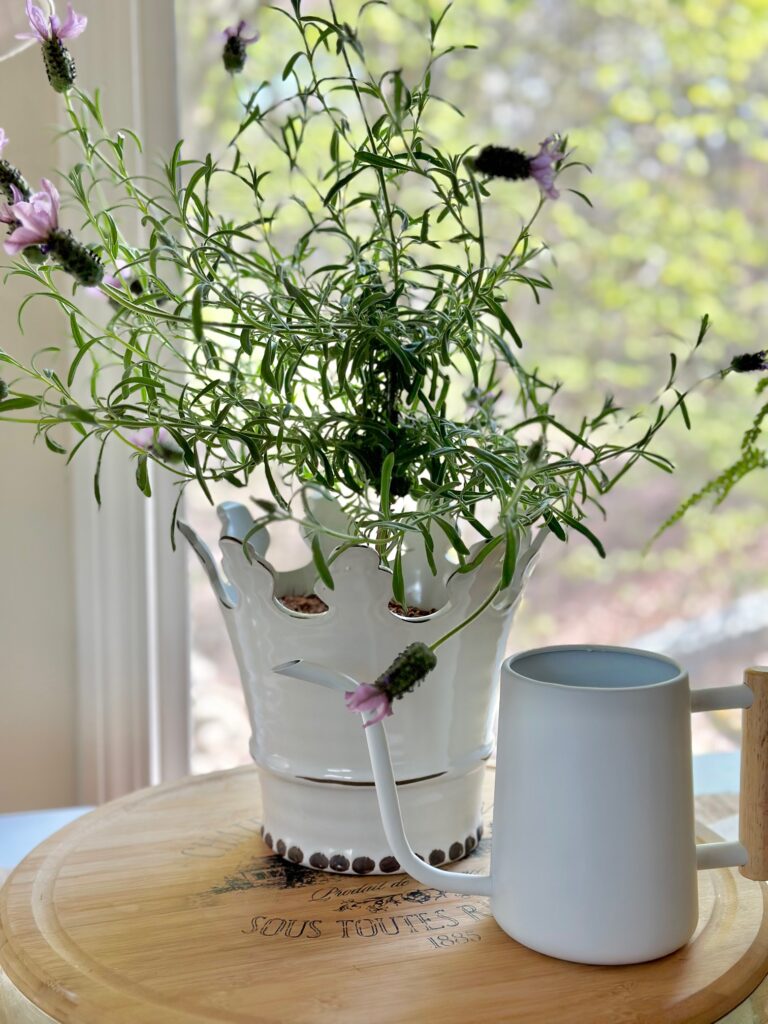
Meeting the Sunlight Needs of Your Indoor Lavender Plant
If you’re growing your indoor lavender plant near a south-facing window, it will get much light, which is great for growth. However, if you don’t have enough light, consider using a grow light to supplement the natural light. Ensure your plant has enough sunlight, which is around 6 hours of direct sunlight a day. Lavender thrives in a sunny spot with good ventilation, so consider placing it near an open window or in a room with good airflow.
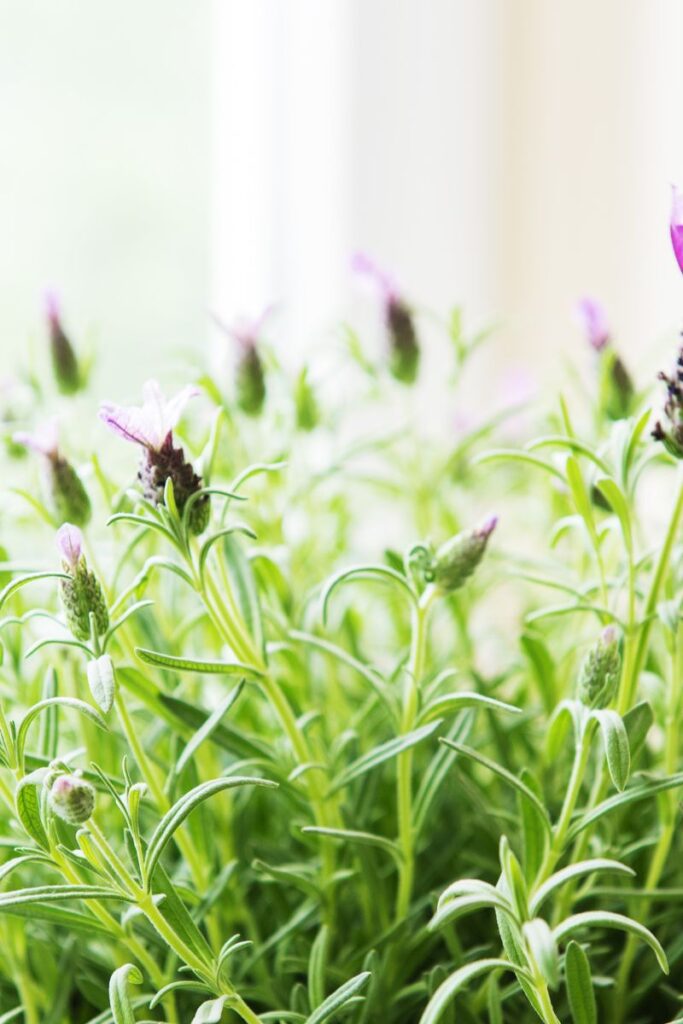
Pruning and Harvesting Tips for Healthy and Vibrant Indoor Lavender Plants
Pruning is an essential part of caring for indoor lavender plants. Regular pruning helps maintain the plant’s shape, promotes healthy growth, and can increase the plant’s lifespan. Pruning also encourages the plant to produce more flowers, which is one of the reasons why many people grow lavender indoors.
When pruning indoor lavender, it’s important to use a sharp, clean pair of pruning shears to make precise cuts. The best time to prune lavender is in the spring or early summer, just after the plant has finished blooming. At this time, you can remove any dead or damaged branches and cut back the plant to promote new growth.
To prune indoor lavender, start by removing any dead or diseased branches with pruning shears. Then, trim back any branches that are growing out of shape or that are too long. When pruning, it’s best to cut just above a set of leaves or a bud, as this will encourage new growth.
It’s important not to over-prune lavender, as this can weaken the plant and reduce its ability to produce flowers. If you’re unsure how much to prune, start with a small amount and observe the plant’s response before making additional cuts.
In addition to regular pruning, it’s also important to maintain good airflow around the plant and to remove any spent flowers or leaves to prevent the spread of disease. With proper care and attention, indoor lavender can thrive and provide beautiful, fragrant blooms year-round.
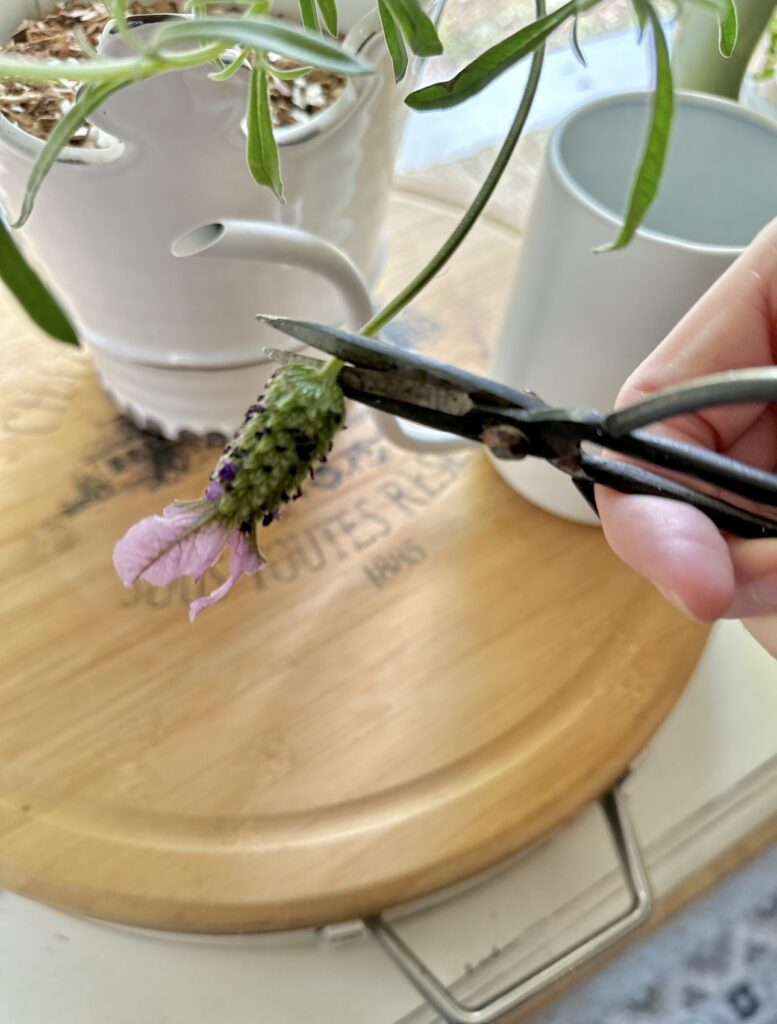
Tips for Planting New Lavender
When planting new lavender plants, be sure to place small stones at the bottom of the pot to aid in drainage. When transplanting mature plants, take care not to disturb the root ball. Water your plant thoroughly during the first week after transplanting and then reduce the amount of water you give it. Slow-release fertilizer is a good idea for indoor lavender plants, as it provides the necessary nutrients for growth.
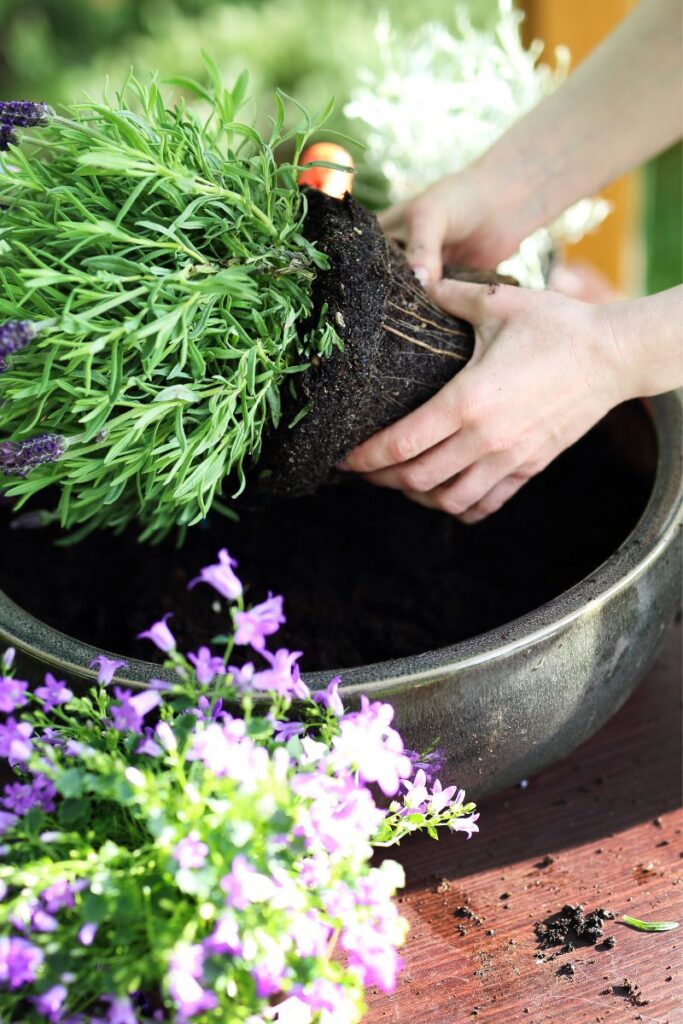
Common Problems and Solutions for Growing Indoor Lavender
Growing lavender indoors can be a rewarding experience, but it’s not without its challenges. Some common problems that indoor lavender growers may encounter include root rot, fungal diseases, pests, and wilting. To prevent root rot, it’s important to avoid overwatering and ensure that the soil is well-draining. Fungal diseases can be prevented by providing good air circulation and avoiding high humidity levels. Pests such as spider mites, aphids, and mealybugs can be controlled through regular monitoring and treatment with insecticidal soap or neem oil. Wilting can be a sign of underwatering, overwatering, or pests, so it’s important to diagnose the underlying issue and address it accordingly. Overall, taking preventative measures and staying vigilant can help indoor lavender growers avoid common problems and keep their plants healthy and thriving.
Frequently Asked Questions about Growing Lavender Indoors
Lavender plants need plenty of light to thrive, at least six hours of direct sunlight per day. Place your indoor lavender plant near a south-facing window or use a grow light if needed.
Yes, you can use lavender essential oil from your indoor lavender plant. Harvest the lavender stems when the plant is in full bloom and dry them before extracting the essential oil. Use the oils for candles, soaps, bath salts and more!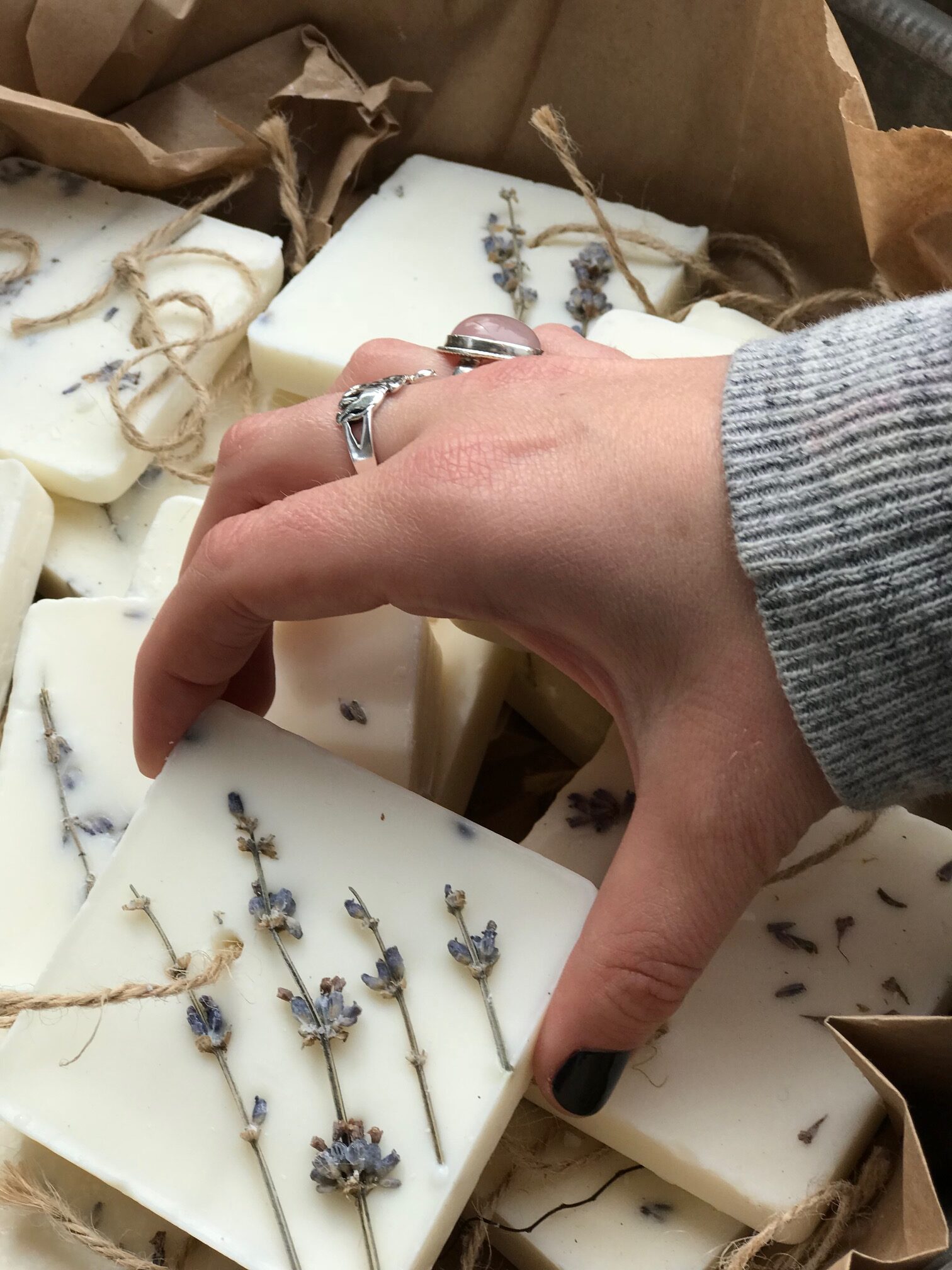
Root rot can occur in lavender plants when the soil is too wet or the plant is overwatered. To prevent root rot, ensure your lavender plant has proper drainage holes and use a well-draining soil mix. Allow the soil to dry out between watering.
Prune your indoor lavender plant in early spring before new growth appears. Trim off the top inch of growth and shape the plant as desired. Pruning regularly will help promote new growth and keep the plant healthy.
Yes! Propagate your indoor lavender plant by taking stem cuttings in the early fall. Strip off the leaves from the bottom of the stem and place it in moist soil. Keep the soil moist and place the cutting in a sunny spot with good ventilation.
Lavender flowers can be used to make fragrant sachets, potpourri, or infused into oils for use in aromatherapy. Culinary lavender can be used in cooking and baking. Harvest the flowers when the blooms are fully open and dry them before use.
Yes, lavender can be grown in a self-watering (wicking) planter by using a well-draining potting mix, ensuring the wick or capillary mat extends into the soil, and keeping the water reservoir filled with water. However, keep an eye out and be careful not to overwater the lavender as it can be susceptible to root rot. Place the planter in a location with plenty of sunlight and maintain a temperature between 60-85°F (15-30°C) for optimal growth. Consider fertilizing your lavender for beautiful blooms.
While lavender plants are generally considered non-toxic and pose little threat to humans or pets if consumed, excessive ingestion of plant material can cause stomach upset. However, the toxicity concern lies with lavender oil, which can be toxic in large amounts.
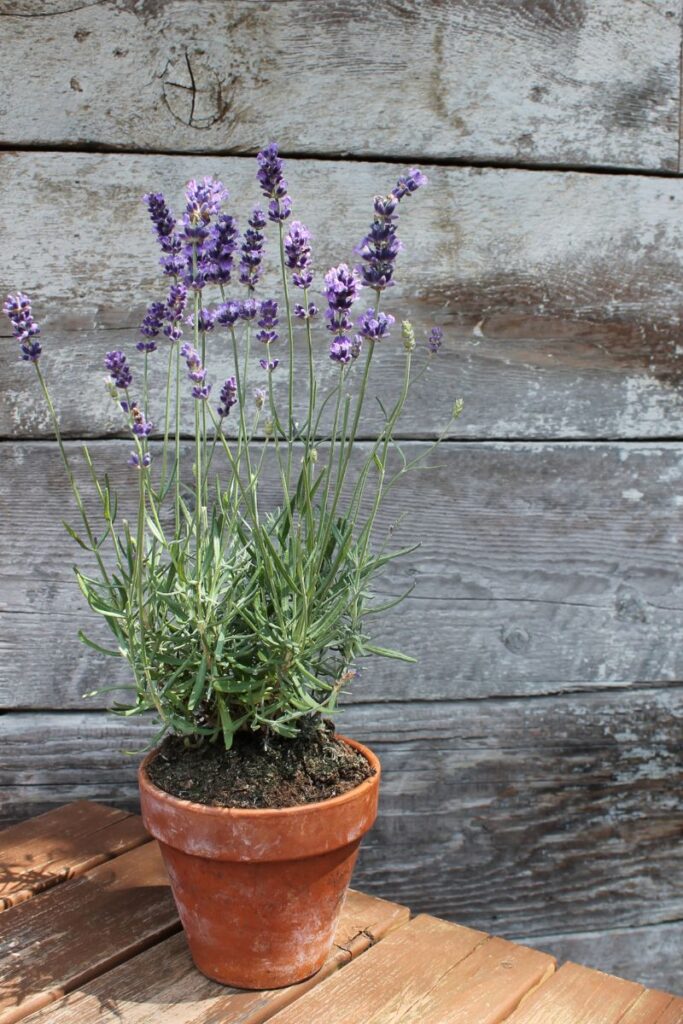
Lavender Superlatives
Lavender is a multi-purpose plant with a variety of uses for its culinary, medicinal, and aromatic properties. Different varieties of lavender are better suited for specific purposes. Some varieties are better for cooking and baking, while others are more fragrant or easier to grow indoors. Certain types of lavender are also better for drying than others. In this section, we’ll explore some of the notable qualities of various lavender varieties and what makes them stand out for specific purposes.
The Most Common Variety of Lavender
The most common variety of lavender is English lavender (Lavandula angustifolia), also known as true lavender. It is a small, aromatic shrub that typically grows to about two to three feet tall and produces fragrant purple-blue flowers. English lavender is widely cultivated for its essential oil, which is used in perfumes, soaps, and other personal care products. It is also commonly used in herbal remedies and aromatherapy. English lavender is native to the Mediterranean region but is now grown throughout the world in a variety of climates.
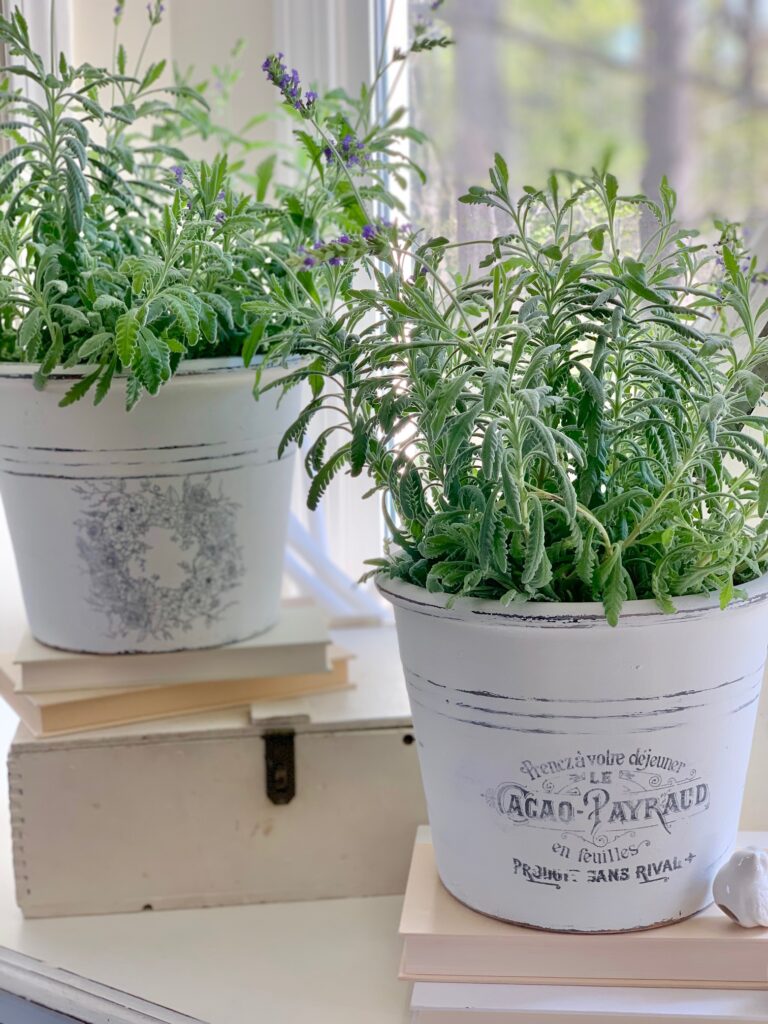
The Most Fragrant Lavender
The most fragrant indoor lavender varieties include English lavender (Lavandula angustifolia), Lavandin (Lavandula x intermedia), and French lavender (Lavandula dentata). However, it’s important to note that the level of fragrance can vary depending on factors such as growing conditions and the age of the plant.
The Easiest Lavender to Grow
English Lavender (Lavandula angustifolia) is often considered the easiest indoor lavender to grow. It is a popular choice for indoor growing because of its relatively compact size, ease of care, and pleasant fragrance. Other types of lavender that are known for being easy to grow indoors include Lavandula stoechas and Lavandula x intermedia.
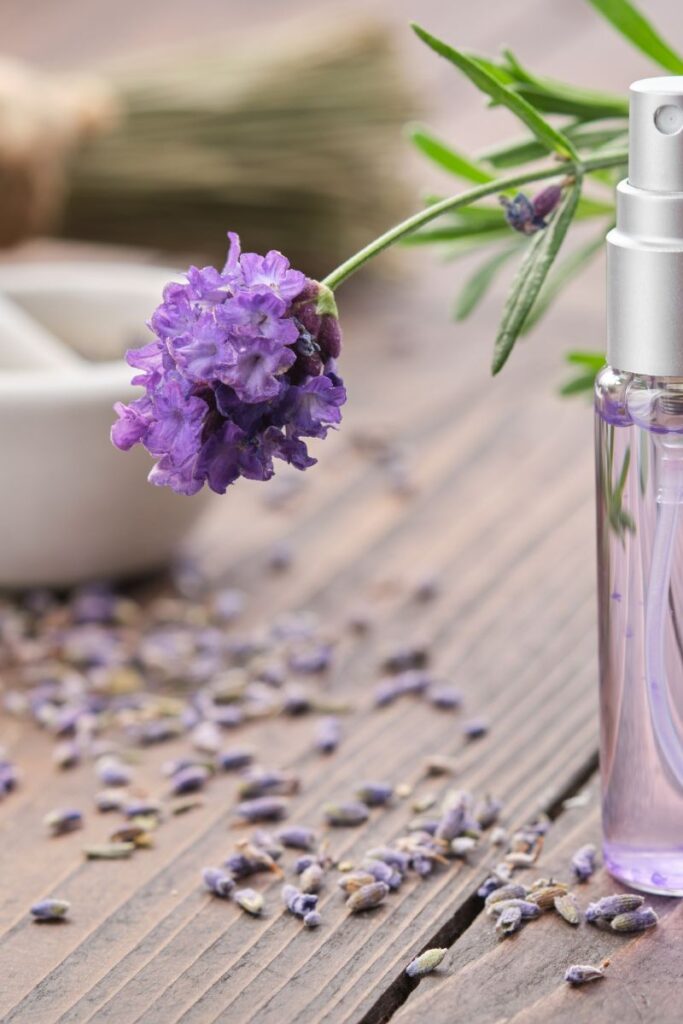
The Best Lavender to Use in Cooking and Baking
Culinary lavender, which is a type of lavender that is safe for consumption, is used in cooking and baking to add a delicate floral flavor and aroma to various dishes.
Common Uses of Culinary Lavender:
- Baking: Culinary lavender is often used in baking to flavor cakes, cookies, and bread. It pairs well with lemon and honey flavors.
- Beverages: Lavender can be infused into hot water or milk to make tea or latte. It can also be added to cocktails or lemonade for a refreshing twist.
- Savory dishes: Lavender can be used to add a subtle floral note to savory dishes like roasted chicken, grilled fish, and salads.
- Desserts: Lavender is a popular ingredient in desserts like ice cream, panna cotta, and crème brûlée.
- Herbal blends: Lavender can be combined with other herbs like thyme, rosemary, and sage to make a flavorful seasoning blend for meat, fish, and vegetables.
It’s important to note that culinary lavender should be used in moderation, as too much can make a dish taste soapy or bitter.

Types of Culinary Lavender
There are several types of lavender that are commonly used for culinary purposes, including:
- English Lavender (Lavandula angustifolia): This is the most commonly used lavender in cooking. It has a sweet and floral flavor, with hints of lemon and mint.
- French Lavender (Lavandula dentata): French lavender has a slightly more assertive flavor than English lavender, with a camphorous taste and a slightly bitter aftertaste.
- Spanish Lavender (Lavandula stoechas): Spanish lavender has a slightly sweet, resinous flavor with hints of rosemary and sage.
When using lavender in cooking, it’s important to make sure you’re using culinary lavender that hasn’t been treated with pesticides or chemicals. Additionally, it’s important to use lavender sparingly, as its flavor can quickly become overpowering.
The Best Lavender for Drying
When it comes to drying lavender, there are several varieties that work well. Here are a few popular options:
- English lavender (Lavandula angustifolia): This is the most commonly grown lavender for drying, as it produces long, slender stems with high oil content and a sweet fragrance.
- French lavender (Lavandula dentata): This variety has a strong, sweet scent and produces long stems with serrated leaves, making it a good choice for drying.
- Lavandin (Lavandula x intermedia): This is a hybrid of English and spike lavender, and is often grown for its high oil content. It produces long stems with blue-purple flowers and a strong scent, making it great for drying.
Ultimately, the best lavender variety for drying will depend on your personal preferences and the specific growing conditions in your area. It’s a good idea to research different varieties and speak with local growers to determine which type of lavender will work best for your needs.
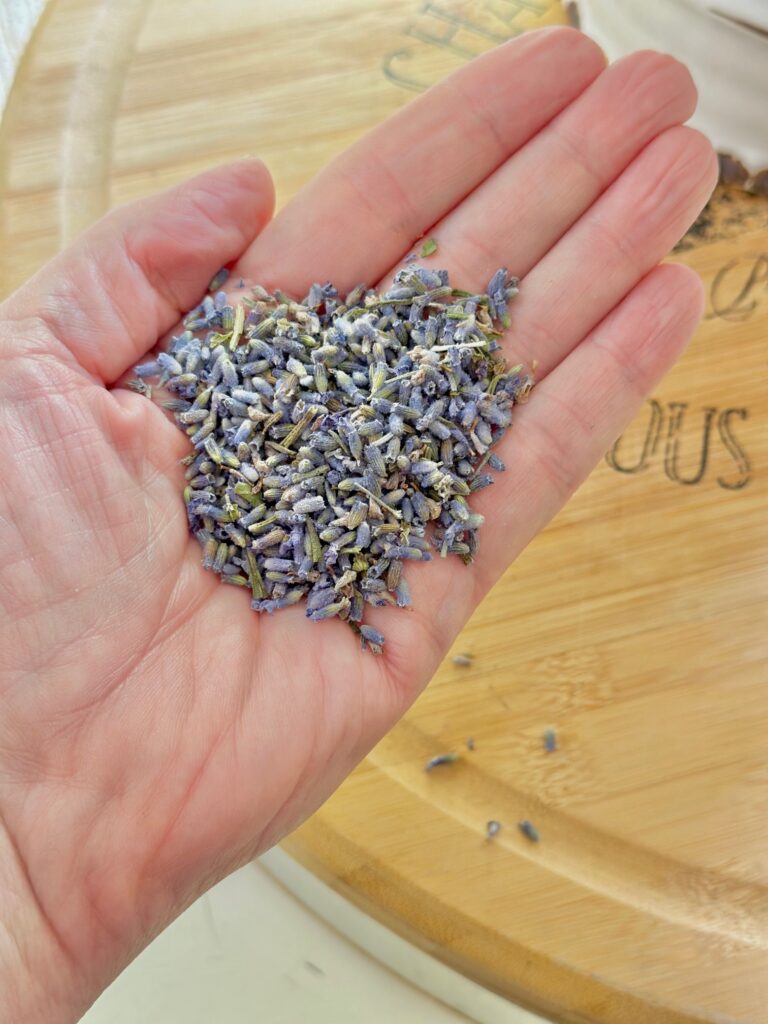
The Best Lavender for Essential Oil Extraction
The best type of lavender for getting essential oils is Lavandula angustifolia, also known as English lavender or true lavender. This variety of lavender is commonly used for essential oil production because it has a high concentration of linalool and linalyl acetate, which give it its distinctive scent and therapeutic properties. It is also relatively easy to grow, making it a popular choice for home gardeners and commercial growers alike. Other varieties of lavender, such as Lavandula x intermedia (lavandin) and Lavandula stoechas (Spanish lavender), are also used for essential oil production but may have slightly different properties and fragrances.
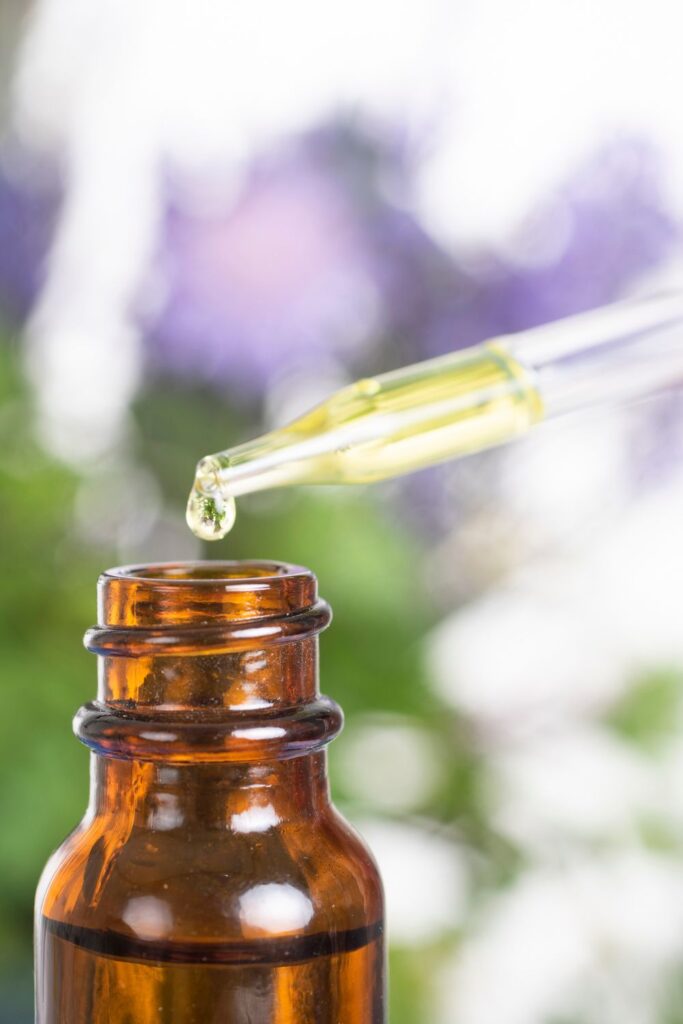
Growing lavender indoors can be a great way to add fragrance and color to your living spaces. With proper care, your indoor lavender plant can thrive and provide fragrant blooms year-round. Be sure to pay careful attention to the soil moisture and the amount of water you’re giving your plant. With a little water, good drainage, and enough light, your indoor lavender plant will flourish in any climate, even in colder climates with mild winters.
Now that you’re growing and harvesting lavender please be sure to visit:
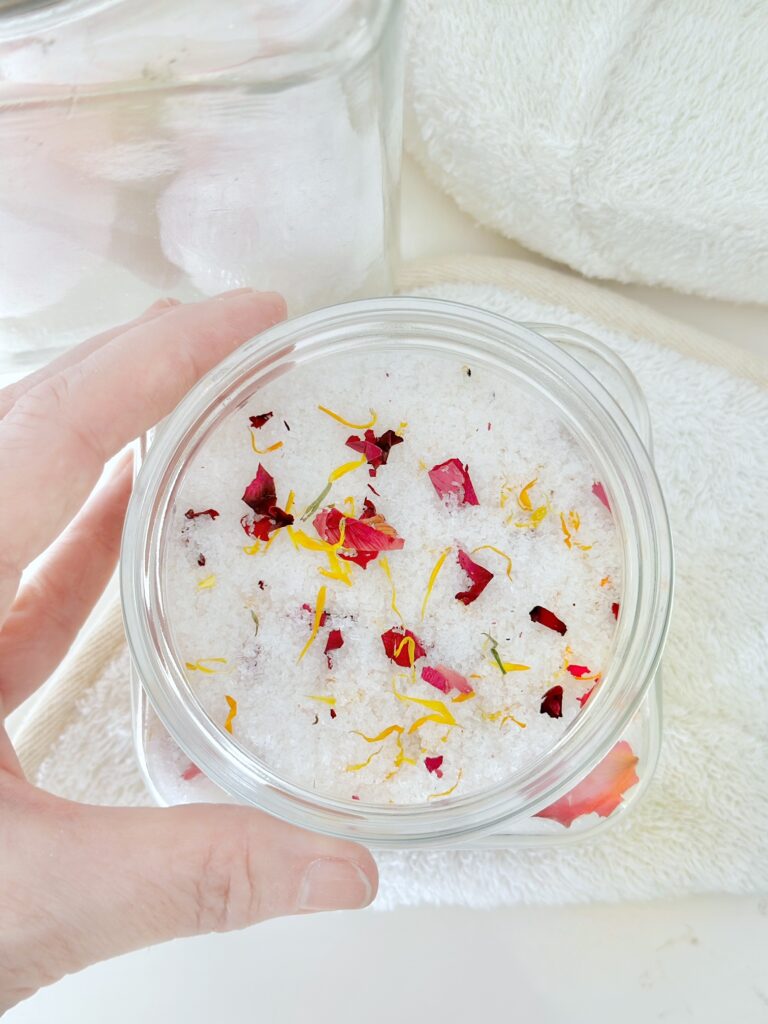
Make Your Own Herbal Bath Salt Recipes For Unwinding:
Dive into our newest post and learn how to jazz up your bath time with homemade herbal bath salts! We’re talking Epsom salt, soothing herbs like lavender, and essential oils for that extra kick of relaxation. It’s an easy DIY that’ll turn your tub into a spa-like oasis without breaking the bank. Get ready to soak in some serious bliss!
Thank you for visiting the blog today for How Often to Water Lavender Indoors: A Comprehensive Guide. I hope I answered all your questions, if not please let me know in the comments!
Happy Gardening!



